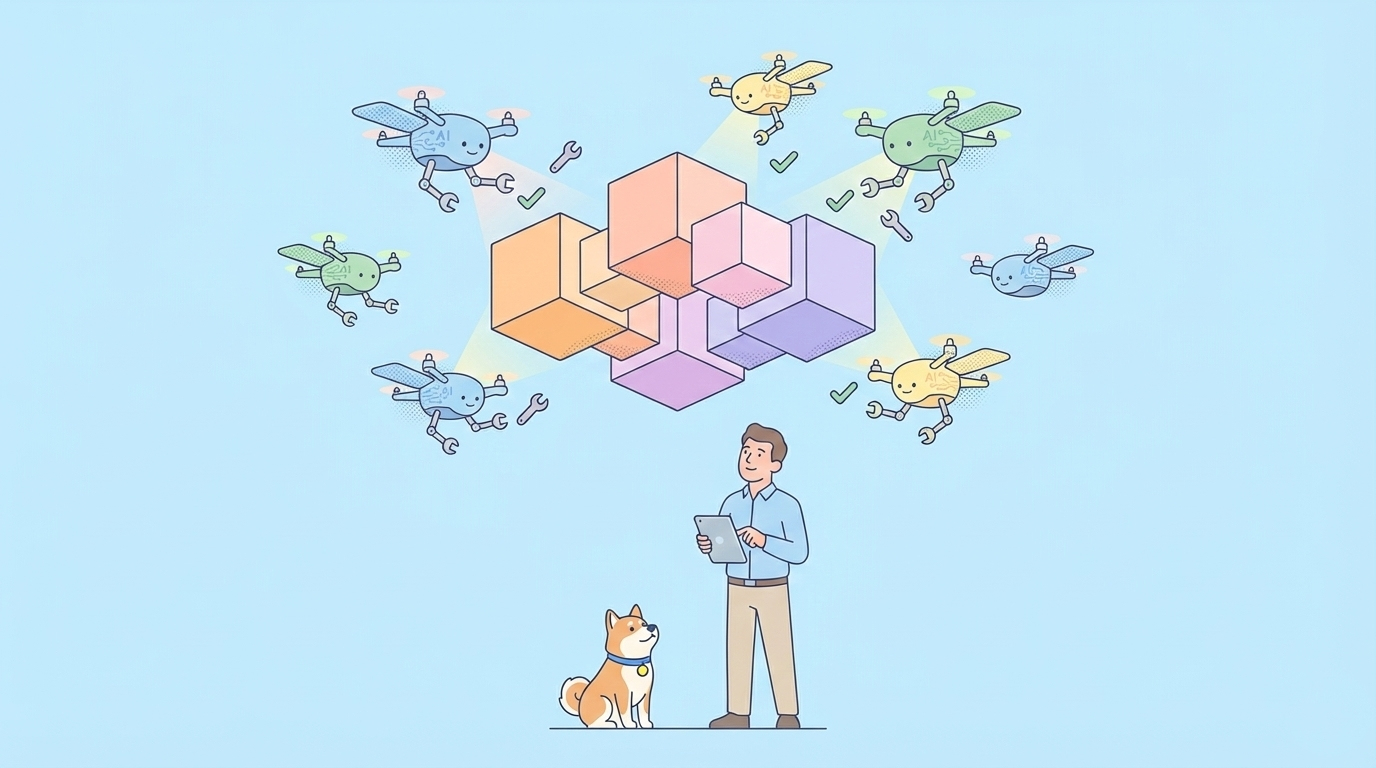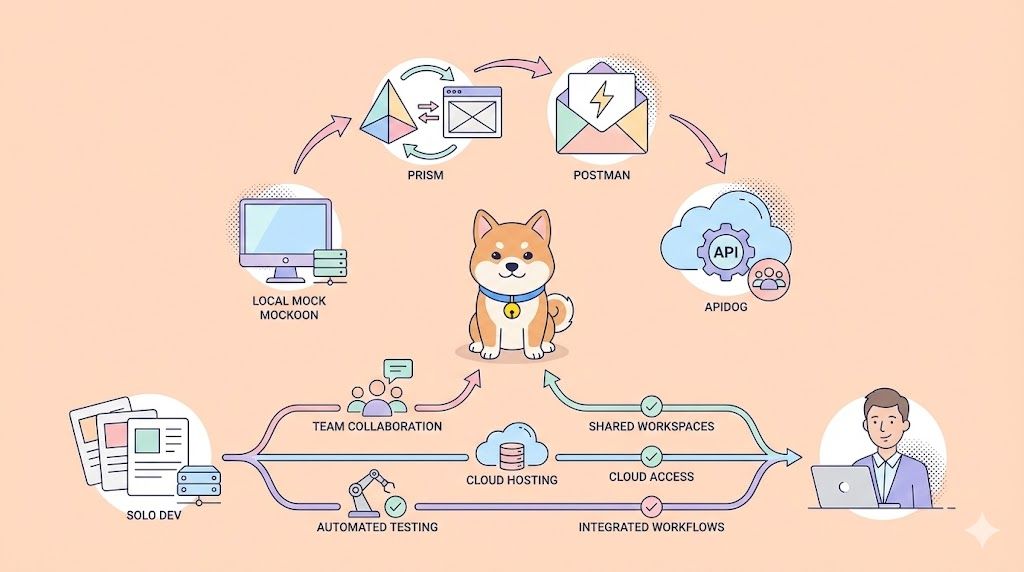Ever wished you could let your AI grab web content on demand? I recently stumbled into fetch mcp server while tinkering with Claude Desktop, and it’s a total game-changer! This nifty tool lets Claude Desktop pull web content—HTML, JSON, or Markdown—straight from URLs, making it perfect for research or automation. In this tutorial, we’ll set up fetch mcp server, connect it to Claude Desktop, and explore how to fetch content effortlessly. Whether you’re new to this or a seasoned pro, I’ll walk you with you every step of the way. Let’s dive into this exciting setup!
What is Fetch MCP Server?
Fetch MCP server is a Model Context Protocol (MCP) server designed to fetch and transform web content into formats like HTML, JSON, plain text, and Markdown. Developed by Zach Caceres and hosted on GitHub, it’s part of the MCP ecosystem—an open standard by Anthropic (launched in 2024) that connects AI models to external tools. With fetch mcp server, Claude Desktop can retrieve web pages, extract data, or convert content on the fly, enhancing its capabilities beyond what it can do natively.
Imagine asking Claude to “fetch the latest article from example.com” or “convert this page to Markdown”—that’s the power of fetch mcp server! It’s lightweight, flexible, and perfect for integrating real-time web data into your workflow. Let’s get it set up with Claude Desktop and see it in action!
Setting Up Your Environment for Fetch MCP Server
Let’s prep your system for fetch mcp server with Claude Desktop. It’s a straightforward process, so let’s get rolling!
1. Check Prerequisites:
- Node.js: You’ll need Node.js (version 16 or higher) installed. Check with
node --versionin your terminal, or download it from nodejs.org. - Claude Desktop: Ensure you have Claude Desktop installed (available from anthropic.com). You’ll need a paid plan (e.g., Max, Team, or Enterprise) for MCP support.
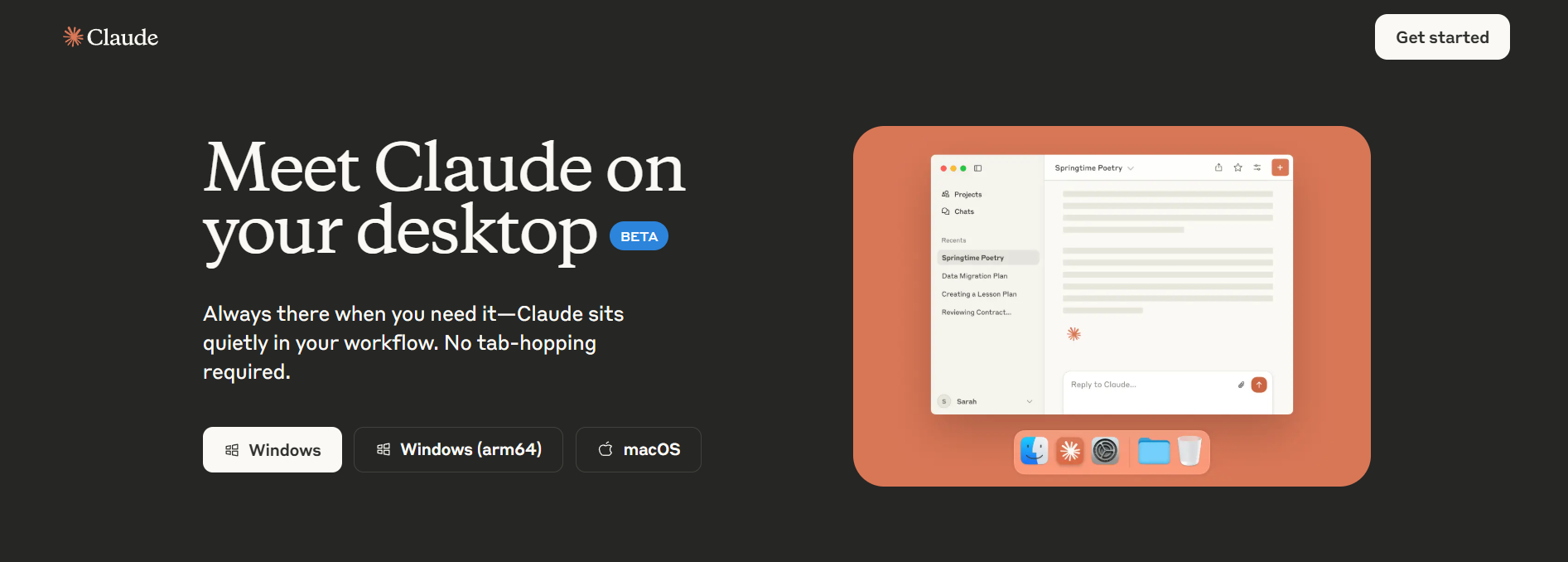
2. Create a Project Folder:
- Open your terminal and create a workspace:
mkdir fetch-mcp-project
cd fetch-mcp-project
- This will be your hub for fetch mcp server setup.
You’re ready to install fetch mcp server—let’s move on!
Installing Fetch MCP Server with Claude Desktop
Now, let’s install fetch mcp server and link it to Claude Desktop. Here’s the step-by-step guide.
1. Clone the Fetch MCP Server Repository:
- In your terminal (inside
fetch-mcp-project), run:
git clone https://github.com/zcaceres/fetch-mcp.git
cd fetch-mcp
- This downloads the latest version of fetch mcp server from GitHub.
2. Install Dependencies & Build the server:
- Run the following to set up the required Node.js packages:
npm install
- This installs dependencies like
sharpfor image processing (if enabled) and ensures the server is ready to run. - Run the command below to build the server:
npm run build
3. Configure Claude Desktop:
- Open your Claude Desktop configuration file. On macOS, it’s located at
~/Library/Application Support/Claude/claude_desktop_config.json. If it doesn’t exist, create it with a text editor. Or directly in the Claude desktop app you could go to > Settings > Developer > Edit Config, and then open the config.json file.
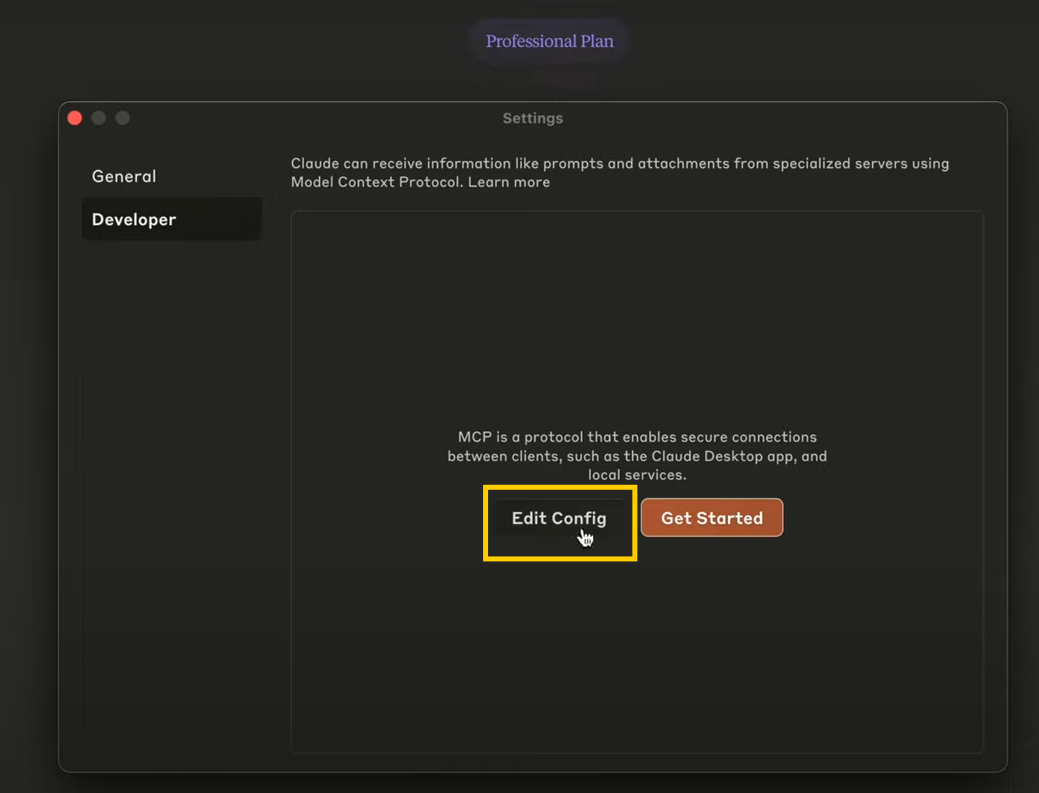
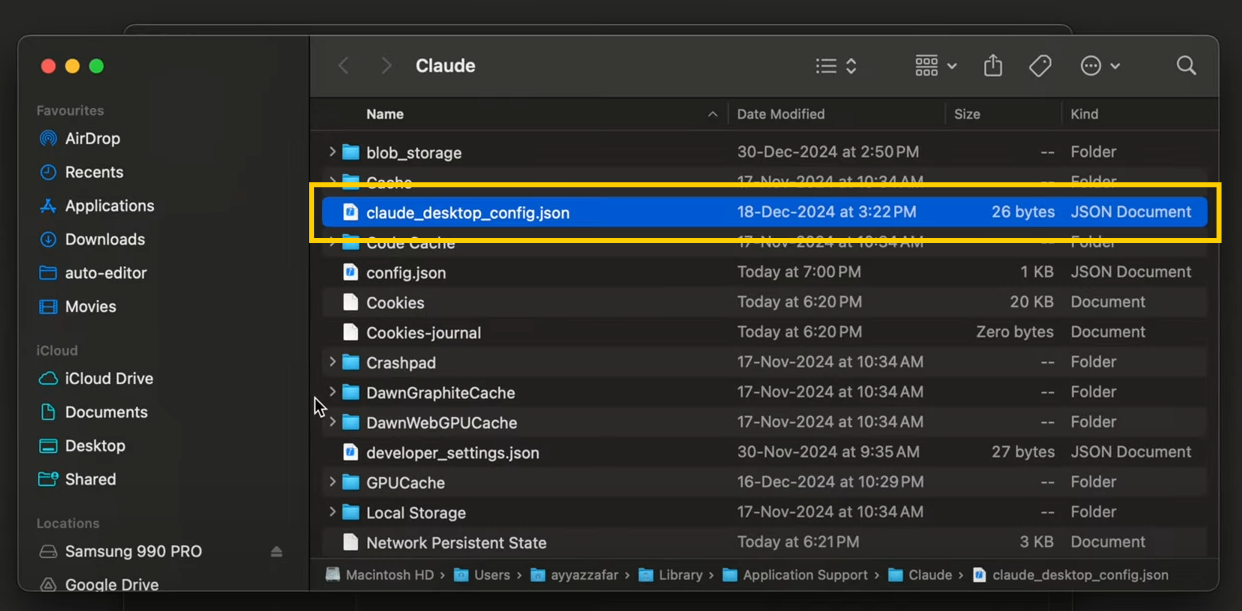
- Add the fetch mcp server configuration:
{
"mcpServers": {
"fetch": {
"command": "node",
"args": ["{ABSOLUTE PATH TO FILE HERE}/dist/index.js"]
}
}
}
- Replace
{ABSOLUTE PATH TO FILE HERE}with the full path tofetch-mcp/dist/index.js(e.g.,/Users/yourname/fetch-mcp-project/fetch-mcp/dist/index.js). You can find this by runningpwdin the terminal within thefetch-mcpfolder.
4. Run the Fetch MCP Server:
- In the terminal, navigate to the
fetch-mcpfolder and start the server:
npm start
# Alternativly you could use:
node dist/index.js- You should see “Fetch MCP Server running on stdio” or similar output, indicating it’s active. Keep this terminal open while using Claude Desktop.
5. Verify the Connection:
- Open Claude Desktop, go to the MCP settings (under the profile menu), and check if “fetch” appears under available servers with a green indicator. If not, double-check the path in
claude_desktop_config.jsonor ensure the server is running.
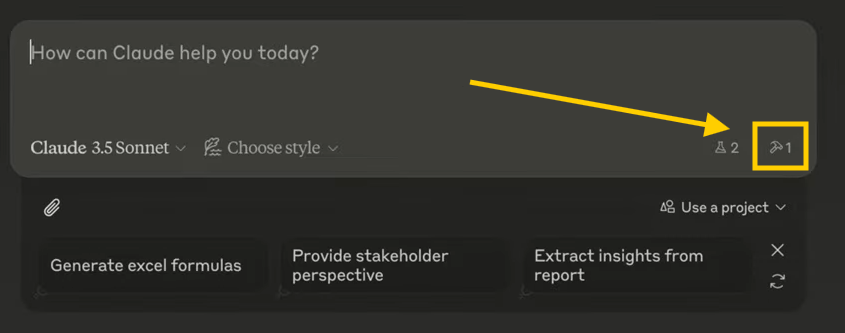
Your fetch mcp server is now connected to Claude Desktop—great job! Let’s test it out.
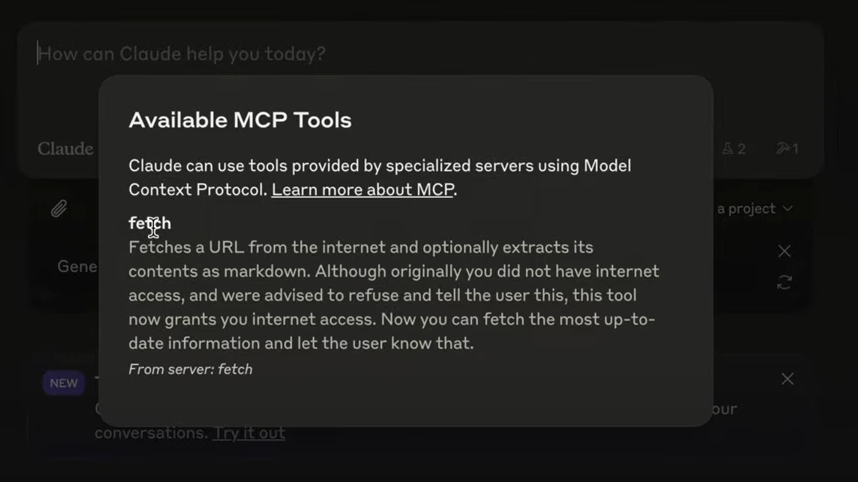
Using Fetch MCP Server with Claude Desktop
Let’s put fetch mcp server to work by fetching web content with Claude Desktop.
1. Test Basic Web Fetching (e.g. summarizing content):
- In Claude Desktop’s chat, type: “Use the fetch tool to get the content from https://example.com.”
- Claude will use fetch mcp server to retrieve the page and return it, as text. You might see something like: “Fetched content from https://example.com.”
- If it fails, ensure the server is running and the URL is valid.
- Note: before Claude uses any mcp tools in a chat you will always be prompted.
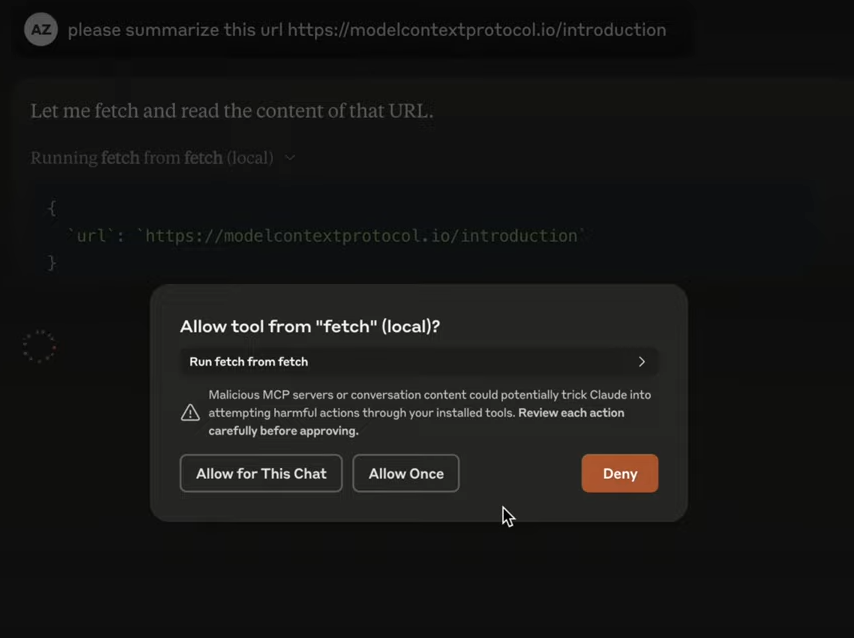
2. Fetch and Convert to Markdown:
- Try: “Fetch https://example.com and convert it to Markdown.”
- Fetch mcp server will process the page and return a clean Markdown version, perfect for documentation or analysis. Claude might respond: “Converted https://example.com to Markdown: [Markdown content].”
- This is great for turning articles into readable notes!
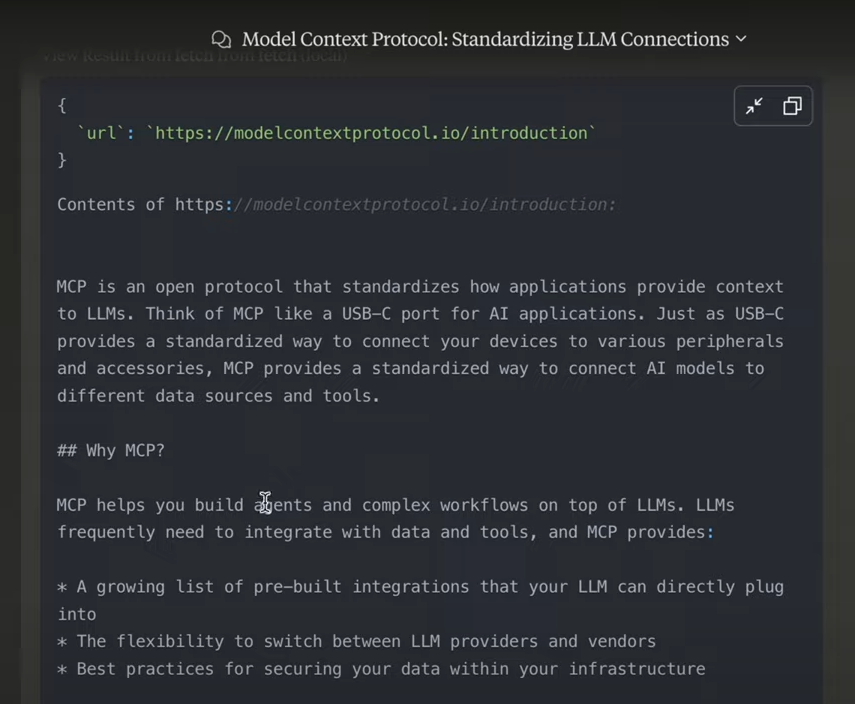
This opens up a world of possibilities with fetch mcp server—let’s explore more!
Exploring Advanced Features of Fetch MCP Server
There’s more to fetch mcp server than basic fetching. Here’s how to dig deeper with Claude Desktop.
1. Customize Fetch Requests:
- Add parameters like: “Fetch https://example.com with a max length of 500 characters.”
- This limits the output, useful for long pages. Check the GitHub repo for more config options like
ignoreRobotsTxt.
2. Integrate with Workflows:
- Combine with other MCP servers (e.g., a Notion server) by asking: “Fetch https://example.com and save the Markdown to Notion.”
- Claude can chain tools if configured, streamlining your tasks.
3. Debugging Tips:
- If Claude can’t connect, ensure the server path is correct or try running
node dist/index.jswith--debugfor more logs.
These features make fetch mcp server a versatile tool for your Claude Desktop setup!

Tips for Mastering Fetch MCP Server
To get the most out of fetch mcp server with Claude Desktop:
- Check Paths: Double-check the absolute path in
claude_desktop_config.jsonto avoid connection issues. - Enable Features: Experiment with
enableFetchImagesfor visual content—Claude users get this perk! - Keep Server Running: Don’t close the terminal with the server—restart it if needed.
- Explore GitHub: The fetch-mcp repo has updates and examples to try.
My Experience with Fetch MCP Server
Using fetch mcp server with Claude Desktop was a blast! Fetching web pages and turning them into Markdown saved me tons of time. The setup was smooth once I nailed the path, though I had to tweak it a couple of times. If you run into trouble, verify your server status or check the GitHub issues for help.
Wrapping Up: Your Fetch MCP Server Journey
You’ve just set up fetch mcp server with Claude Desktop and unlocked web content fetching magic! From grabbing pages to converting them into Markdown or images, you’re now equipped to supercharge your AI workflow. Try fetching your favorite sites or automating tasks, and share your wins! For more, check out the GitHub repo and don't forget to stop over at apidog.com for some of that API goodness. A better alternative to postman!

